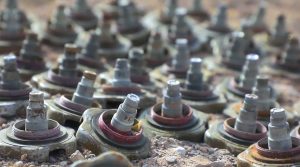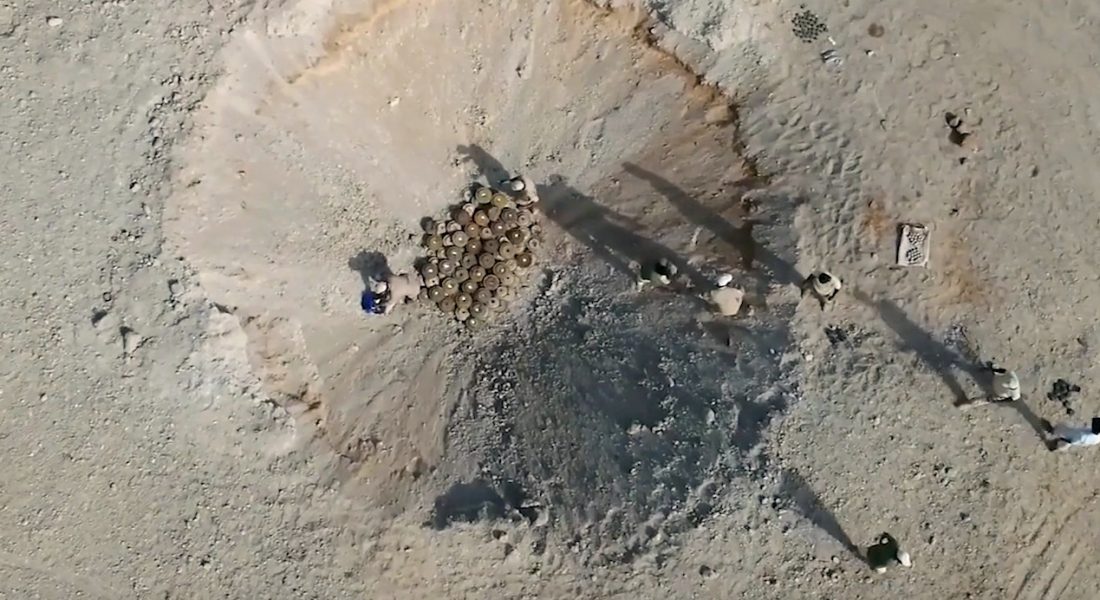Project Masam has destroyed a total of 261,800 emplaced landmines, unexploded ordnance (UXO) and improvised explosive devices (IEDs) since it entered Yemen in mid-2018.
As our humanitarian mine clearing operations continue, we spoke to our demining expert Training Officer Deon von Landsberg about the demolition process.
Why does Masam demolish the explosive items it finds?
In alignment with the global mine action sector, Project Masam’s responsibilities include the clearance, removal or destruction of landmines stockpile and explosive remnants of war.
By destroying the explosive items, Project Masam ensures they can no longer function as designed – this effectively protects civilian populations and helps to eradicate these deadly weapons.
Where does Masam demolish those items?

In accordance with International Mine Action Standards (IMAS), Project Masam’s carries its Bulk, or Mass, Demolition Operations on selected demolition grounds, with International Set of Rules included in all its standard operating procedures (SOP 22).
“Masam Aden have a Central Destruction Site (CDS) where all bulk demolitions take place,” Von Landsberg told Masam from Aden.
These operations are executed by well trained personnel and are always executed in the presence of a demolition expert who monitors the operation from off-loading to counting of the physical demolition, he explained.
How does Masam guarantee that some of the ordnance won’t leave the disposal site on detonation?
The Demolition Team sweeps the area around the pit after each demolition to remove all the scrap metal and confirm there are no kick-outs.
Von Landsberg added: “After completion of a demolition task the demolition team scan the CDS area and assure no dangerous items have been kicked out by the blast effect of the demolition.”
Von Landsberg explained the IMAS dictates the standard for multi-item demolitions and Masam teaching is in-line with that standard.
“Therefore the teams should be layering the pit in such a way that mitigates the chance of a kick-out,” Von Landsberg said. “That said, a kick-out of a thick-cased item is always possible, even when working to the proper principals, however, our demolitions are usually a very high proportion of thin-cased items, because we typically destroy hundreds of anti-vehicle/anti-tank mines/devices layered on-top of a small proportion of thick-cased items, and so the risk is minimal.”
What happens if Masam cannot transport items?
When it is not possible to remove and transport explosive items in open detonation (OBOD) operations after deminers locate them, the Demolition Team carries out In-Situ demolition.
“Demolitions on site which means that you have Unexploded Ordnance (UXO) found during mine clearance and survey operations that is too dangerous to move and must be destroyed In Situ, which is done by a Well Trained Explosive Ordnance Device (EOD) expert. The safety procedures are the same as with bulk demolitions, as outlined in Masam’s SOP 22,” Von Landsberg explained.
Watch our latest demolition operation here.

